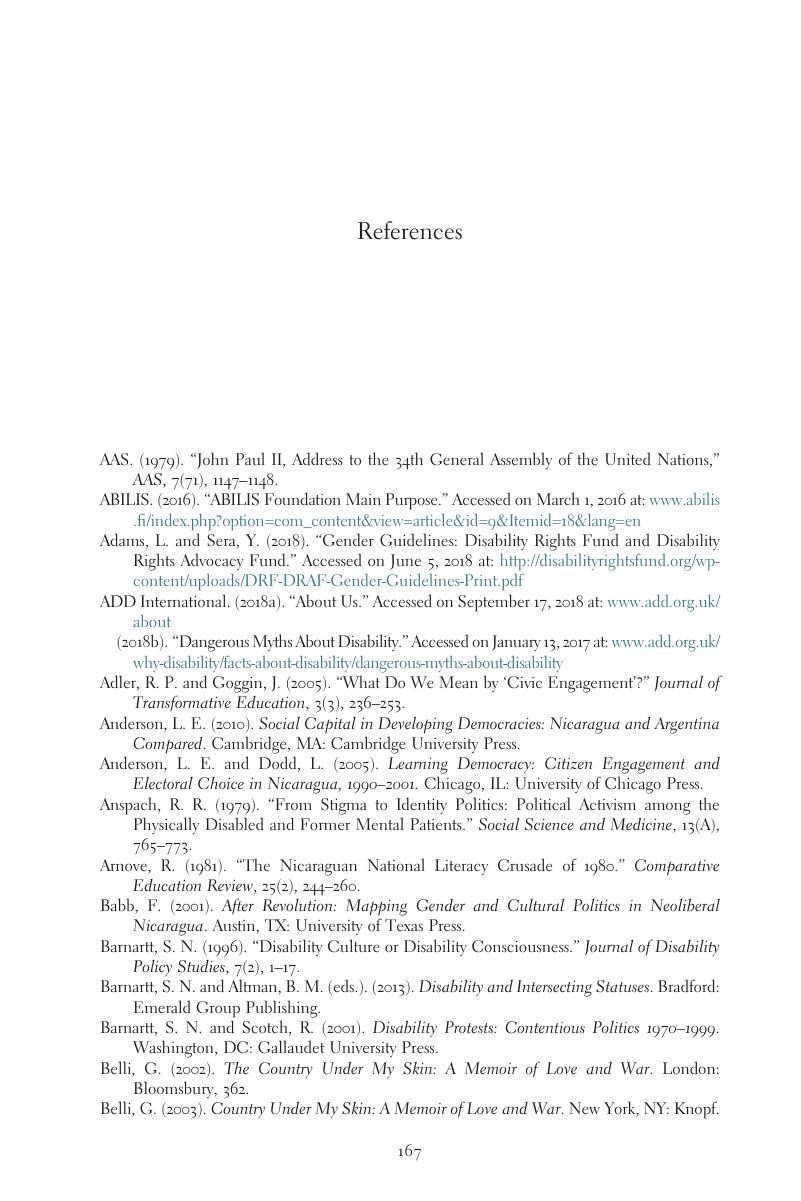 Civilizing Disability Society
Civilizing Disability Society Book contents
- Civilizing Disability Society
- Cambridge Disability Law and Policy Series
- Civilizing Disability Society
- Copyright page
- Contents
- Acknowledgments
- 1 Spending Down a Grant
- 2 Inhabiting Nicaraguan Civil Society at the Intersection
- 3 The Problem with Pretty Little Programs
- 4 Grassroots Members Walking and Rolling Away
- 5 Identity Politics as the Continuation of War by Other Means
- 6 Innovation at the Crossroads
- 7 The CRPD’s Civilizing Mission
- References
- Index
- References
References
Published online by Cambridge University Press: 27 September 2019
- Civilizing Disability Society
- Cambridge Disability Law and Policy Series
- Civilizing Disability Society
- Copyright page
- Contents
- Acknowledgments
- 1 Spending Down a Grant
- 2 Inhabiting Nicaraguan Civil Society at the Intersection
- 3 The Problem with Pretty Little Programs
- 4 Grassroots Members Walking and Rolling Away
- 5 Identity Politics as the Continuation of War by Other Means
- 6 Innovation at the Crossroads
- 7 The CRPD’s Civilizing Mission
- References
- Index
- References
Summary

- Type
- Chapter
- Information
- Civilizing Disability SocietyThe Convention on the Rights of Persons with Disabilities Socializing Grassroots Disabled Persons' Organizations in Nicaragua, pp. 167 - 176Publisher: Cambridge University PressPrint publication year: 2019
